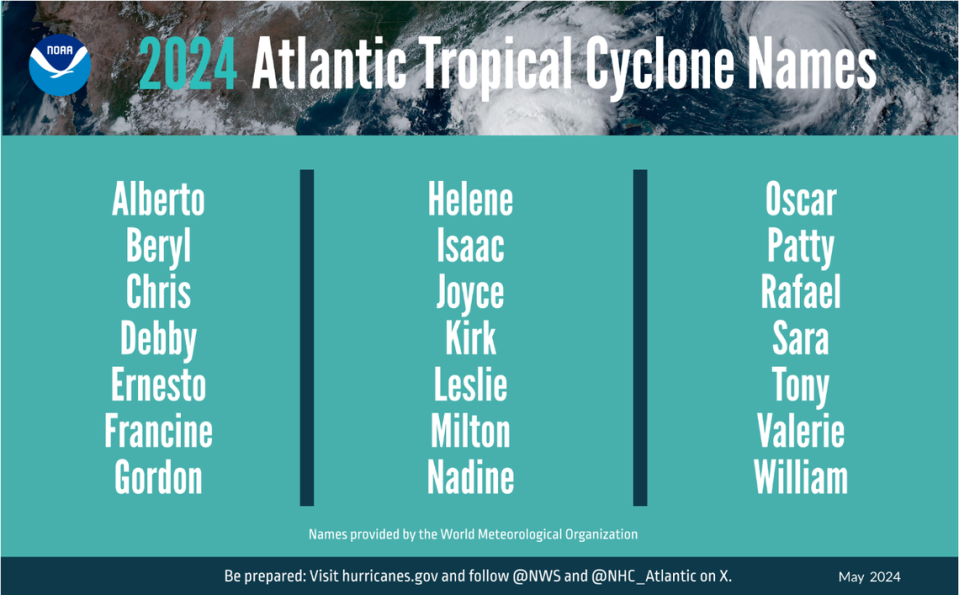This hurricane season will be ‘extraordinary,’ NOAA says. What to expect on the MS Coast
National forecasters issued their most severe hurricane predictions ever on Thursday and warned of an “extraordinary” and active season even as they pleaded that residents prepare — not panic.
The numbers are stark: the National Oceanic and Atmospheric Administration forecasts an “above average” season with 17 to 25 named storms in the Atlantic, agency leaders said in a news conference Thursday morning.
That forecast, said NOAA administrator Rick Spinrad, is “the highest NOAA has ever issued for the May outlook.”
Of those storms, eight to 13 are forecast become hurricanes, NOAA said. Four to seven of the storms are predicted to be “major hurricanes” with categories between 3 and 5.
“It’s reason to be concerned,” said Ken Graham, the director of the National Weather Service. “But not alarmed.”

The forecast signals new and troubling facts for South Mississippi, which has largely avoided direct storm risk in recent years. A hurricane usually hits land somewhere in the Gulf South each season, but the odds of landfall rise by about 25 percent during an active year, said Matt Rosencrans, NOAA’s lead hurricane seasonal forecaster and author of Thursday’s outlook.
The odds go up further in a hyperactive year, he said. Record hot temperatures across the Atlantic also support predictions of more storms and mean any system that develops could intensify fast in the Gulf of Mexico.
Still, leaders at NOAA and the National Weather Service stressed people should not fear the forecast. Instead, they said, residents of hurricane-prone areas like the Mississippi Coast should take time before the season begins next weekend to understand their risks and plan ahead.
The higher-than-ever storm forecast is due to several factors that help hurricanes develop.
Record warm waters in the Atlantic and Gulf of Mexico mean storms barreling over the heated ocean will pick up energy and grow faster, forecasters said.
And this year is likely see La Niña — a weather pattern that forms when westerly winds weaken high in the atmosphere. That weakening means winds that form low in the atmosphere can be stronger, and it often signals more Atlantic hurricanes will form.
Forecasters also said an active West African monsoon season could produce easterly waves that become the seeds of Atlantic hurricanes and tropical storms.
There is a small chance the forecast could end up lower than predicted. NOAA said there is an 85 percent chance of an above normal season, a 10 percent chance of a near-normal season and a 5 percent chance of a season that falls below normal.
Average hurricane seasons usually have 14 named storms, seven hurricanes and three major hurricanes. Named storms refer to storms with winds of 39 miles per hour and up, hurricanes have winds of 74 miles per hour or higher and major hurricanes have winds of 111 miles per hour or higher.
The storms have recently spared South Mississippi. Hurricane Ida slammed the Coast and flooded the region in 2021, but the state avoided the devastation of more recent storms like Hurricane Idalia, which made landfall in 2023 in Florida as a Category 4.
NOAA also announced its list of 2024 Atlantic tropical cyclone names, which range from Alberto to William.
Hurricane season begins June 1 and ends November 30. The height of that risk falls between August and October.
“We’ve been through some pretty tough seasons,” Graham, the NWS director, said. “We’ll get through this without a doubt.”


